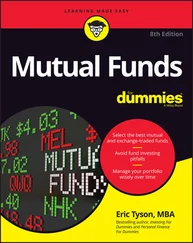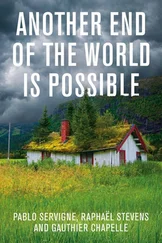30 30. When colonies of Escherichia coli (the most frequently studied bacteria) grow in a Petri dish, we observe that it’s the contact area (and therefore the area of exchange) between cells which is maximized, rather than the area of contact with the nutrient substrate. If the cells were in competition, the reverse would be observed. See J. A. Shapiro and C. Hsu, ‘E. coli K-12 cell–cell interactions seen by time-lapse video’, The Journal of Bacteriology, 171, 1989, pp. 5963–74.
31 31. J. A. Shapiro, ‘Bacteria are small but not stupid: Cognition, natural genetic engineering and socio-bacteriology’, Studies in History and Philosophy of Biological and Biomedical Sciences, 38, 2007, pp. 807–19.
32 32. And this has been the case for a very long time since, among the first traces of fossil bacteria, we find stromatolites, a veritable lasagne of biofilms of bacteria. See R. P. Reid et al., ‘The role of microbes in accretion, lamination and early lithification of modern marine stromatolites’, Nature, 406, 2000, pp. 989–92.
33 33. R. K. Behl et al., ‘Wheat x Azotobacter x VA Mycorrhiza interactions towards plant nutrition and growth – a review’, Journal of Applied Botany and Food Quality, 81, 2007, pp. 95–109; R. Kumar et al., ‘Establishment of Azotobacter on plant roots: Chemotactic response, development and analysis of root exudates of cotton (Gossypium hirsutum L.) and wheat (Triticum aestivum L.)’, Journal of Basic Microbiology, 47, 2007, pp. 436–9.
34 34. D. G. Adams et al., ‘Cyanobacterial symbioses’, in B. A. Whitton (ed.), Ecology of Cyanobacteria II (Dordrecht: Springer Netherlands, 2012), pp. 593–647.
35 35. R. Gordon and R. W. Drum, ‘The chemical basis of diatom morphogenesis’, International Review of Cytology, 150, 1994, pp. 243–372.
36 36. M. D. Kane and U. G. Mueller, ‘Insights from insect–microbe symbioses’, in J. T. Staley and A.-L. Reysenbach (eds), Biodiversity of Microbial Life (New York: Wiley-Liss, Inc., 2002), pp. 289–313; A. E. Douglas, ‘Nutritional interactions in insect–microbial symbioses: Aphids and their symbiotic bacteria Buchnera’, Annual Review of Entomology, 43, 1998, pp. 17–37.
37 37. These are two of the most abundant and least biodegradable plastics. These studies therefore open up a promising avenue of research on the biodegradability of plastics. See J. Yang et al., ‘Evidence of polyethylene biodegradation by bacterial strains from the guts of plastic-eating waxworms’, Environmental Science and Technology, 48, 2014, pp. 13776–84; J. Yang et al., ‘Biodegradation and mineralization of polystyrene by plastic-eating mealworms: Part 2. Role of gut microorganisms’, Environmental Science and Technology, 49 (20), 2015, pp. 12087–93.
38 38. W. H. Karasov and H. V. Carey, ‘Metabolic teamwork between gut microbes and hosts’, Microbe, 4, 2009, pp. 323–8. See also the remarkable synthesis of a great French-speaking specialist in symbiosis, Professor Marc-André Selosse, Jamais seul. Ces microbes qui construisent les plantes, les animaux et les civilisations (Arles: Actes Sud, 2017), chapter 4.
39 39. L. Margulis and D. Sagan, The Garden of Microbial Delights: A Practical Guide to the Subvisible World (Dubuque, IA: Kendall/ Hunt, 1993).
40 40. Chance does things right, so these neglected subjects have meanwhile been covered extensively in Selosse’s Jamais seul.
41 41. E. Yong, I Contain Multitudes (London: Bodley Head, 2016).
42 42. About 38,000 billion bacteria for 30,000 billion human cells. See R. Sender et al., ‘Revised estimates for the number of human and bacteria cells in the body’, PLoS Biology, 14 (8), 2016, art. e1002533.
43 43. See E. O. Wilson, The Social Conquest of Earth (New York: Liveright Publishing, 2012).
44 44. They are measured in terms of the survival of the species: that is to say, of the number of descendants. We therefore do not include in this table any intentions, or such things as pleasure, disappointment, enthusiasm or morality.
45 45. Herbivory is an intermediate situation because the grazed plant does not necessarily die either.
46 46. The work and life of Pyotr Alexeyevich Kropotkin (1842–1921) are relatively well known. See his autobiography (Kropotkin, Memoirs of a Revolutionist, first published in 1899 and available online: https://theanarchistlibrary.org/library/petr-kropotkin-memoirs-of-a-revolutionist) and the biography by G. Woodcock and I. Avakumović, The Anarchist Prince: A Biographical Study of Peter Kropotkin (London: T. V. Boardman and Company, 1950).
47 47. The Swiss body that gave birth to the anti-authoritarian communist movement later known as anarchism.
48 48. P. Kropotkin, Mutual Aid, first published in 1902 and available online: https://theanarchistlibrary.org/library/petr-kropotkin-mutual-aid-a-factor-of-evolution.
49 49. For further discussion, see P. Clastres, Society against the State: Essays in Political Anthropology, trans. R. Hurley in collaboration with A. Stein (London: Zone Books, 1987).
50 50. The latter considered humans to be sociable by accident, and not by nature. But, for him, this state of nature was not a description of reality; it was a construction of the mind, a philosophical hypothesis to explain our society and make it possible to discuss the laws obtaining in it.
51 51. These included the British biologist, palaeontologist and philosopher Thomas Henry Huxley (1825–95), and the theorist of the ‘survival of the fittest’, Herbert Spencer.
52 52. Darwin never denied the importance of cooperation in the struggle for livelihood, but overstated the role of competition. Kropotkin did the opposite.
53 53. S. J. Gould, Bully for Brontosaurus: Reflections in Natural History (New York: W. W. Norton & Co., 1992), p. 330; the chapter is entitled ‘Kropotkin was no crackpot’.
54 54. On this view, the human mind is born as blank as an empty page; only experience will write on it.
55 55. The famous phrase from ‘In Memoriam’, written in 1849 by Alfred Tennyson (stanza 56).
56 56. Or rather a ‘social fact’ (fait social), as Durkheim called it, since the concept of society exists only among Westerners ‘separated’ from the living world.
57 57. F. Terrasson, La Peur de la nature (Paris: Sang de la Terre, 1997).
58 58. Interview with Douglas Keay, 23 September 1987, published in Woman’s Own, 31 October 1987, pp. 8–10. The full quotation reads: ‘There is no such thing as society. There is living tapestry [sic] of men and women and people and the beauty of that tapestry and the quality of our lives will depend upon how much each of us is prepared to take responsibility for ourselves and each of us prepared to turn round and help by our own efforts those who are unfortunate.’ See www.margaretthatcher.org/document/106689.
59 59. See the works by J.-C. Michéa, Impasse Adam Smith: brèves remarques sur l’impossibilité de dépasser le capitalisme sur sa gauche (Paris: Climats, 2002); La Double Pensée: retour sur la question libérale (Paris: Flammarion, 2008); and L’Empire du moindre mal: essai sur la civilisation libérale (Paris: Flammarion, 2010).
60 60. On this subject, read the many fascinating ideas in La Revue du MAUSS, 31, 2008: ‘L’homme est-il un animal sympathique? Le contr’Hobbes’.
61 61. Darwin not only always rejected the idea that particular ethical consequences could be drawn from his work, but also fought against racism, eugenics and slavery. See P. Tort, L’Effet Darwin (Paris: Seuil, 2009), and C. Darwin, The Descent of Man, first published in 1871 and available online: http://darwin-online.org.uk/content/frameset?pageseq=1&itemID=F937.1&viewtype=text.
62 62. As regards naturalism, see the latest (monumental) book by D. Andler, La Silhouette de l’humain: quelle place pour le naturalisme dans le monde d’aujourd’hui? (Paris: Gallimard, 2016).
Читать дальше












